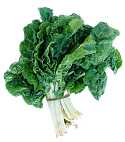|
Beta vulgaris (Chard, Beetroot, Sugarbeet, Mangel-wurzel)
Life
> eukaryotes >
Archaeoplastida >
Chloroplastida
>
Charophyta > Streptophytina > Plantae (land plants)
> Tracheophyta (vascular plants) > Euphyllophyta > Lignophyta (woody plants)
> Spermatophyta (seed plants) > Angiospermae (flowering
plants)
> Core Eudicots
> Order: Caryophyllales > Family:
Amaranthaceae
All the varieties of this domestic species ultimately
originate from wild Sea Beet Beta maritima which is native to the
Mediterranean and the Atlantic seaboard of Europe.
Varieties of Beta vulgaris were produced through
selective cultivation of See Beet which is native to
the Mediterranean and the Atlantic seaboard of Europe as far north as the
Baltic. Sea Beet does not have a swollen root unlike most of the varieties that
have been produced from it. The main varieties of Beta vulgaris are as
follows:
|
Beta vulgaris var.
cicla (Leaf Beet, Spinach beet, Swiss chard)
A leafy vegetable, cooked
like spinach and referred to, incorrectly, as spinach in South
Africa. It was referred to by Aristotle in about 350 BC and was
probably cultivated well before this. Rich in minerals (particularly
magnesium but also calcium, iron, phosphorus and potassium) and also
vitamins (particularly Vitamin A). |
 |
|
Beta vulgaris var. esculenta
(Beetroot)
Eaten in Roman times at
which time it was a long, white root. The swollen red root originated in
about the mid 1500's. Its colour is the result of high
concentrations of red betalains (nitrogen-containing pigments). If a person is doubly recessive for a
certain gene, s/he is unable to break down this pigment and it is passed in the
urine. Beetroot contains high levels of magnesium and manganese. |
 |
|
Beta vulgaris var. rapacea
(Mangel-wurzel, Fodder beet)
Large white or yellow
swollen roots developed in the 1700's for feeding livestock. The name
Mangel-wurzel comes from the German for
beet (mangel) and the German for root (wurzel). |
|
|
Beta vulgaris var. vulgaris (Sugar beet)
By 1750 a process had been
developed in Prussia for extracting sugar (sucrose) from red and white
beets. During the Napoleonic wars British blockades cut off cane sugar
supplies to the European continent and so the growing of Beet for sugar
became economical and was also encouraged by Napoleon and the King of
Prussia. Through selection, the sucrose level in the beets eventually
reached about 20%. By 1900, beet sugar production in Europe was nearly as
great as World cane sugar production. |
|
References
-
Sauer, J.D. 1993. Historical geography of
crop plants - a select roster. CRC Press, Boca Raton, Florida.
-
van Wyk, B.-E. 2005. Food Plants of the World -
Identification, Culinary Uses and Nutritional Value. Briza, Pretoria.
Text by Hamish Robertson |
